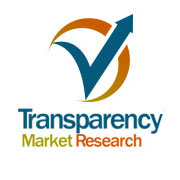Surging demand for polymers drives the global non-halogenated flame retardants market. In addition to several components, polymers also contain flame retardants in order to enhance their resistance to fire. Flame retardants help in slowing down the spreading of fire. However, the function of flame retardants is only restricted to promoting fire resistance and lower heat generation since it does not make polymers non-combustible.
The demand for flame retardants is propelled by extensive consumption of polymers across numerous industry segments such as textiles, construction, electronics, and transportation. In 2012, this market was valued at US$1.26 billion. However, owing to greater regulatory support in addition to high polymer demand, the global non-halogenated flame retardants market is anticipated to grow at an 8.1% CAGR between 2012 and 2018 thereby reaching a market value worth US$2.15 billion by 2018.
The global non-halogenated flame retardants market is characterized by strict implementation of environmental and fire safety regulations. Regulatory measures play a significant role in the performance of the non-halogenated flame retardants market.
Get FREE Sample PDF file of Non-Halogenated Flame Retardants Market : http://www.transparencymarketresearch.com/sample/sample.php?flag=S&rep_id=1273
What Drives the Segment for Aluminum Hydroxide Non-halogenated Flame Retardants?
The global non-halogenated flame retardants market is systematically classified on the basis of product, end-use industries, application, and geography. On the basis of product, this market is segmented into phosphorus based non-halogenated flame retardants, aluminum hydroxide (ATH), and others which include nitrogen and magnesium hydroxide.
Aluminum hydroxide is mostly applied in construction, automobiles, and electrical appliances. In 2012, the market for aluminum hydroxide held an about 70% of the market share owing to robust demand for the same. Aluminum hydroxide non-halogenated flame retardant is very inexpensive, which is why it is highly demanded in the market.
Based on end-use industries, the global non-halogenated flame retardants market is classified into transportation, electrical industry, and building and construction. The other industries include furniture and textiles.
Electrical Industry Segment to Witness Robust Growth
Some of the key end-use industries in the global non-halogenated flame retardants market include transportation, electrical, and construction. Since these industries are susceptible to fire hazards, the demand for non-halogenated flame retardants is quite high from these segments. It is anticipated that substantial demand for non-halogenated flame retardants will come from the electrical industry during the forecast period.
Application-wise, the non-halogenated flame retardants market is categorized into styrenics, rubber, engineering thermoplastics (ETP), PVC, polyolefin, unsaturated polyester (UPE), epoxy resins, and others. The application segment for polyolefins holds the highest share in the overall non-halogenated flame retardants market, followed by the epoxy resins segment. The engineering thermoplastics segment is anticipated to expand robustly during the forecast period. This segment will grow at an 8.1% CAGR between 2012 and 2018.
Key Role of Nanotechnology in Further Growth of the Market
On the basis of geography, the non-halogenated flame retardants market is segmented into Asia Pacific, North America, Europe, and Rest of the World. Owing to heightened environmental concerns, the North America and Europe markets are characterized by strict implementation of rules pertaining to the limited production and lesser imports of goods containing halogenated flame retardants. As a result, economies such as India, China, Indonesia, and Malaysia will be affected since these economies export huge quantities of finished goods containing flame retardant polymers to the U.S. and Europe. This in turn will lead to the growth of the non-halogenated flame retardants market in Asia Pacific.
The leading four companies operating in the global non-halogenated flame retardants market collectively account for 40% of the total share in the market. Few other prominent companies in this industry are mainly engaged in the production of mineral based non-halogenated flame retardants which are magnesium hydroxide and aluminum hydroxide. Other prominent companies in the market include Clariant International Ltd., BASF AG, Chemtura Corporation, Italmatch, and more.
The introduction of nanotechnology in the area of product development is expected to give a major boost to the global non-halogenated flame retardants market in the years to come.
About Us
Transparency Market Research (TMR) is a global market intelligence company providing business information reports and services. The company’s exclusive blend of quantitative forecasting and trend analysis provides forward-looking insight for thousands of decision makers. TMR’s experienced team of analysts, researchers, and consultants use proprietary data sources and various tools and techniques to gather and analyze information.
TMR’s data repository is continuously updated and revised by a team of research experts so that it always reflects the latest trends and information. With extensive research and analysis capabilities, Transparency Market Research employs rigorous primary and secondary research techniques to develop distinctive data sets and research material for business reports.

